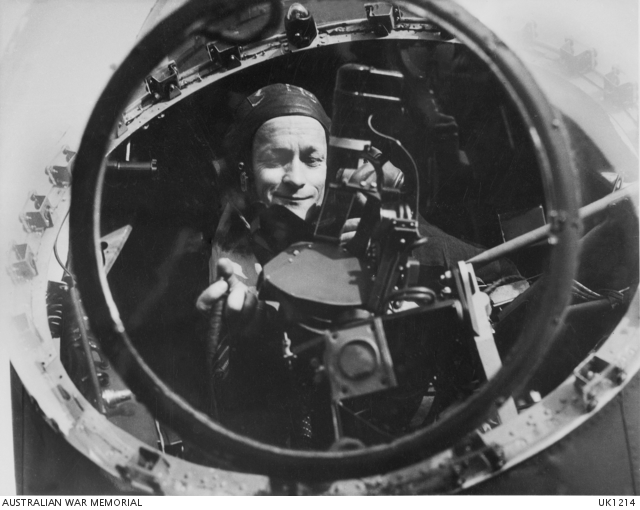Striking by Night - Bomb Aimer

Location of bomb aimer
After take off the bomb aimer moved from his crash position (behind the wings) into the nose, either lying at the bombsight or manning the nose gun turret above it.
Note: Some bomb aimers never sat in the turret others did. It was very rare for a bomb aimer to use the nose guns as night fighters did not attack from the front.
During the bombing run towards the target the bomb aimer would move to lie or knee in nose compartment with his elbows on a cushion.
On the left hand side of the bomb aimer, a Mark 14, a black suitcase sized box was an early computer into which was fed data on the aircraft's altitude, speed, course, windspeed and direction and the bomb types being carried, from which the data was fed to the gyroscopic bomb sight. That would project an illuminated cross onto the glass 5-10cms wide. The object was to get the aiming point in the centre of the cross.
Also mounted on the right side of the nose was a sixteen switch panel for setting the order and timing of the bomb release (to maintain balance the bombs had to be dropped in the correct sequence).
Responsibilities
- On the run to target gave directions to the pilot prior to the release time.
- Select the bomb switches and make certain that they were selected
- Release the bombs ‘bombs gone’
- If the target could not be seen, instructed the pilot to go around again, turning back over the target.
- Trigger the photo flash that fell through a chute in the rear of the fuselage allowing the bomb aimer to take a photograph of the aiming point
- Selector switched then checked for any ‘hung up ‘ bombs
- Gave instructions to close the bomb doors
- From August 1943 onwards the bomb aimer or wireless officer dispersed ‘window’, foil strips to render the German radar ineffective, through the hatch in the floor of the nose
- Sometimes served as a relief pilot if needed
- Through much of the flight served as a second pair of eyes and assited map reader for the navigator
Dress
A typical uniform consisted of a helmet, oxygen mask, parachute, boots, shirt, trousers, tie, gloves, a whistle and an escape kit.
Flight Sergeant L. J. Manning, Nelson Bay, NSW at his bomb-sight in "Whoa Bessie", a Lancasster bomber aircraft of No. 463 Squadron RAAF of Bomber Command.
